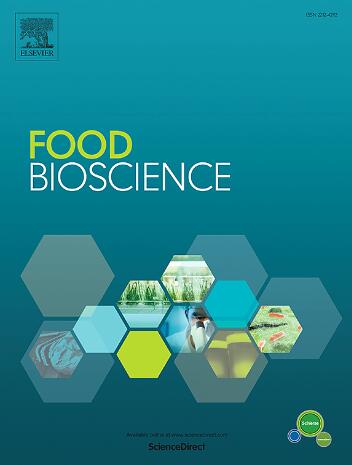探讨一些功能性乳酸菌在胁迫条件下的生存机制:形态变化和交叉保护
IF 4.8
1区 农林科学
Q1 FOOD SCIENCE & TECHNOLOGY
引用次数: 0
摘要
利用三种功能乳酸菌(Lactococcus lactis 19.3、Leuconostoc citreum P109和Lactobacillus helveticus 34.9)研究胁迫条件下的生存机制,这三种功能乳酸菌分别产生细菌素、胞外多糖和s层蛋白。扫描电镜观察显示了几种形态变化,包括延长、缩短、缩小或弯曲的细胞,这表明这些可能是为了增强细胞在压力环境中的适应性而进行的适应。这三种菌株在暴露于大多数胁迫条件下,包括高温(高达50°C)、低pH(2.0-3.0)、高浓度NaCl(高达10%)或胆汁盐(0.4%),均表现出良好的存活率,与基因组中特定应激基因的存在没有明确的联系。而含有3个胁迫相关基因(与低pH抗性相关的groEL和LBA1272,与胆盐抗性相关的LBA1446)的L. citreum P109表现出最显著的交叉保护作用。在亚致死胁迫条件下,这三个被评估基因的上调可能在这种交叉保护中起重要作用。本文章由计算机程序翻译,如有差异,请以英文原文为准。
Exploring the survival mechanisms of some functional lactic acid bacteria under stress conditions: morphological changes and cross-protection
Three functional lactic acid bacteria, namely Lactococcus lactis 19.3, Leuconostoc citreum P109 and Lactobacillus helveticus 34.9, which have been previously shown to produce bacteriocins, exopolysaccharides, and S-layer proteins, respectively, were used to study the survival mechanisms under stress conditions. Scanning electron microscopy observation revealed several morphological alterations, including elongated, shorter, shrunken, or curved cells, suggesting these may be adaptations meant to enhance cells fitness in stressful environments. All three strains demonstrated good survival rates when exposed to most of the stress conditions, including high temperatures (up to 50 °C), low pH (2.0–3.0), high concentrations of NaCl (up to 10 %) or bile salts (0.4 %), with no clear link to the presence of specific stress genes in their genome. However, L. citreum P109, which contains three stress-related genes (groEL and LBA1272 associated with low pH resistance, and LBA1446 linked to bile salts resistance), exhibited the most significant cross-protective effect. The upregulation of the three evaluated genes under sub-lethal stress conditions may play an important role in this cross-protection.
求助全文
通过发布文献求助,成功后即可免费获取论文全文。
去求助
来源期刊

Food Bioscience
Biochemistry, Genetics and Molecular Biology-Biochemistry
CiteScore
6.40
自引率
5.80%
发文量
671
审稿时长
27 days
期刊介绍:
Food Bioscience is a peer-reviewed journal that aims to provide a forum for recent developments in the field of bio-related food research. The journal focuses on both fundamental and applied research worldwide, with special attention to ethnic and cultural aspects of food bioresearch.
 求助内容:
求助内容: 应助结果提醒方式:
应助结果提醒方式:


